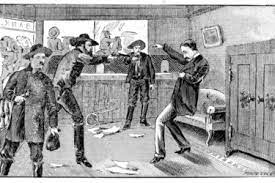On September 9, 1920, the United States was in the midst of the Prohibition era, a time when the production, sale, and distribution of alcoholic beverages were banned. This period of social and political upheaval created an environment conducive to criminal activity, and bank robbers emerged as some of the most notorious figures of the time.
During the 1920s, bank robberies became increasingly prevalent, with criminals taking advantage of the social and economic turmoil to carry out daring heists. The lack of effective law enforcement and the allure of quick wealth made bank robbery an attractive option for many individuals.
One notable group of bank robbers during this period was the Newton Gang, led by brothers Willis and Joe Newton. The gang operated primarily in Texas, Oklahoma, and Kansas and was responsible for a string of successful heists. The Newton Gang became infamous for their meticulous planning and audacious robberies, often targeting small-town banks.
Another notorious bank robber of the time was Willie Sutton, a prolific criminal who operated in the northeastern United States. Sutton was known for his clever disguises, which allowed him to evade capture for many years. He gained notoriety for his successful heists and was eventually dubbed the "Robin Hood of the banks" due to his reputation for targeting wealthy institutions.
One of the most infamous bank robbers of the era was John Dillinger. Dillinger and his gang carried out a series of high-profile robberies throughout the early 1930s, making headlines across the country. Dillinger's daring escapes from prison and his charismatic personality captured the public's imagination, turning him into a folk hero of sorts.
The rise of bank robbers during this time can be attributed to several factors. The Prohibition era created a lucrative black market for alcohol, leading to the emergence of organized crime syndicates and criminal networks. Bank robbers often had connections to these criminal organizations, providing them with resources and protection.
Additionally, the economic hardships of the Great Depression further fueled criminal activity, as many individuals turned to illegal means to survive. Bank robberies offered a chance for quick and substantial financial gain, even as the rest of the country struggled with poverty and unemployment.
Law enforcement agencies, faced with limited resources and the challenges of a rapidly changing criminal landscape, struggled to combat the rise of bank robbers effectively. It was not until the formation of the Federal Bureau of Investigation (FBI) and the implementation of new investigative techniques that significant progress was made in apprehending and bringing these criminals to justice.
The era of bank robbers in the early 20th century left an indelible mark on American popular culture. The exploits of these criminals, romanticized in books, movies, and folk songs, continue to captivate audiences to this day. The fascination with bank robbers reflects a complex mix of admiration for their audacity and a recognition of the desperation and inequality that drove many individuals to a life of crime.
September 9, 1920, stands as a reminder of the era of bank robbers in the United States, a time when social and economic upheaval created an environment conducive to criminal activity. The exploits of these individuals continue to captivate our collective imagination, serving as a reminder of the complex and sometimes contradictory nature of American history.
